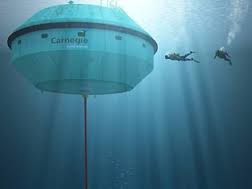Despite claims from Liberal Senator Ron Boswell that no-one had “worked out” wave energy yet, ASX-listed wave energy developer – and installer of the world’s first fully operational, grid connected wave energy array – Carnegie Wave Energy is forging ahead, with the University of Western Australia, on a new R&D project to improve the anchoring systems for wave energy converters.
The $460,000 project, part funded by an Australian Research Council (ARC) Linkage Grant, will use a multidisciplinary approach to investigate unique anchoring concepts, with the aim of developing new strategies to improve anchor design and performance.

Carnegie said that partnering with UWA was part of a strategic approach to co-develop innovations that could be applied to CETO 6 and future projects, with the potential cut the overall cost of wave energy generation and improve unit performance.
“The Centre for Offshore Foundations Systems at UWA has built a world class capability for developing and proving innovative anchoring solutions for offshore applications,” said Carnegie’s chief technology officer Jonathan Fiévez.
“They have a track record of lateral and pragmatic thinking, no doubt in part due to the challenging soil conditions found in Western Australia. A significant proportion of the cost equation for CETO is due to anchoring so this is an excellent opportunity to bring down costs further and faster.”
Carnegie, whose world-leading, 100 per cent Australian-owned CETO wave power systems were last month nominated for the Sustania Award for their potential to supply remote island markets, has been has been selling power to Australia’s largest naval base, HMAS Stirling, since its CETO 5 array was first switched on in February. It will also supply zero-emission desalinated water to the naval base.
The technology, although denied by Boswell, has even been one of very few clean energy technologies championed by federal industry minister Ian Macfarlane.
“Australia has some of the best wave energy resources in the world with our south and south-west coast among the best in the world – it makes sense to tap into this renewable potential that will help diversify our energy mix, and that’s exactly what this project does,” he said at the launch of the Perth Wave Energy Project last year.










